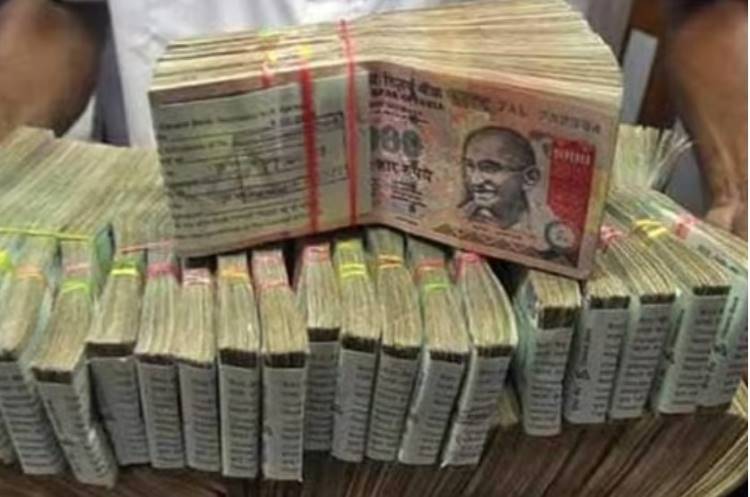The Union government’s revenue collection from direct taxes has reached a 24-year high, with India’s direct tax-to-GDP ratio hitting 6.64% in the fiscal year 2023-24. This is a significant milestone in the history of tax collections, as it indicates not only that the government is generating more revenue from direct taxes—considered more stable and less volatile than indirect taxes—but also that efforts to improve tax compliance and expand the tax base are beginning to bear fruit.
According to the latest Time Series Data released by the Central Board of Direct Taxes (CBDT) on October 17, direct tax collections have surged by over 182% in the last decade, reaching more than Rs 19.60 lakh crore in FY24. Corporate tax collections, in particular, have more than doubled, rising from Rs 4.29 lakh crore in FY15 to Rs 9.11 lakh crore in FY24.
READ | China’s electric vehicle industry is revolutionising the global market
Dramatic increase in direct tax
Similarly, personal income tax collections have seen a dramatic increase, nearly quadrupling from Rs 2.66 lakh crore in FY15 to Rs 10.45 lakh crore in FY24. This growth has been attributed to improved compliance, the expansion of the formal economy, and enhanced tax administration measures, including the extensive use of technology to monitor and process tax payments. However, this raises a crucial question: is the government taxing its citizens more than it should?
The middle-class conundrum
Every Budget season, the middle class looks to the government with hopes of tax relief. The middle class pays both income tax on earnings and Goods and Services Tax (GST) on spending. Despite comprising only about 2% of the population, the middle class contributes significantly to the country’s infrastructure growth and welfare schemes. It has been widely reported that people, particularly from the middle class, are contributing more in taxes than many large corporations. Experts believe that such a heavy reliance on just 2% of India’s population is unsustainable in the long run.
In comparison with other nations, India’s highest tax bracket of 30% for salaried individuals kicks in at lower income levels than in countries like Russia, China, and the United States. The United States has a broader tax base, with around 43% of the population paying taxes, while in India, only 2% of the population is subject to income tax.
According to government data, out of the 7.4 crore Indians who filed tax returns in 2022-23, around 70% had zero tax liability. Finance Minister Nirmala Sitharaman stated that, based on these numbers, only 1.6% of the population is effectively being over-taxed.
Corporate profits up, taxes down
A puzzling trend has emerged in corporate taxes. While corporate profits have soared, corporate tax revenues have declined as a percentage of total receipts. Over the past 12 years, stock markets have quadrupled, reflecting a corresponding increase in corporate profits. However, corporate taxes have decreased. In 2019, the government slashed corporate tax rates, resulting in an annual revenue loss of Rs 1.44 lakh crore. Meanwhile, data from the Economic Survey shows that corporate profits quadrupled between FY20 and FY23.
Although these figures indicate strong corporate performance, the reduction in corporate tax revenues due to these tax cuts is a concerning trend. The tax cuts were intended to boost private sector capital expenditure (capex) and generate more jobs, but these outcomes have not materialised as expected. While profits have surged, hiring and wage growth have lagged behind, a point emphasised by Finance Minister Sitharaman in the 2023-24 Economic Survey.
There is also a disparity in tax payments among Indian companies. Of the 15 lakh private companies in India, only 5% contribute 97% of the total corporate taxes. Moreover, the top 150 companies account for 40% of the taxes paid.
Addressing the Imbalance
The key challenge for the government is to ensure that individuals earning significant incomes and highly profitable companies are taxed appropriately. Without addressing this imbalance, it will be difficult to put more money into the hands of the people who need it most, which is essential for creating a virtuous cycle of consumption.
One solution could be raising the income exemption limit. The government has already taken steps in this direction by increasing the standard deduction to Rs 75,000 in the 2024 Budget, up from Rs 50,000 previously. Increasing the standard deduction further could provide additional relief to individual taxpayers.
Additionally, the government could aim to achieve greater parity between corporate and individual taxpayers through GST reforms. GST has a significant impact on the middle class’s spending. While corporations can claim input tax credits, salaried individuals are not eligible for such refunds. As a result, individuals are taxed on their income and again on their spending, while corporations are taxed only on profits after deducting expenses.
Despite contributing substantially through taxes, the middle class continues to rely on private schools and hospitals, as public infrastructure often falls short. If the government wishes to maintain the middle class’s tax contributions, it must ensure that their tax payments translate into tangible benefits such as improved public services. Without addressing these systemic issues, the middle class will continue to bear a disproportionate tax burden without seeing adequate returns in the form of public goods and services.
While the record-breaking growth in India’s direct tax collection is a positive sign, it is vital to reconsider how the tax burden is distributed between individuals and corporations to foster long-term economic growth and ensure that tax contributions translate into public benefits.

